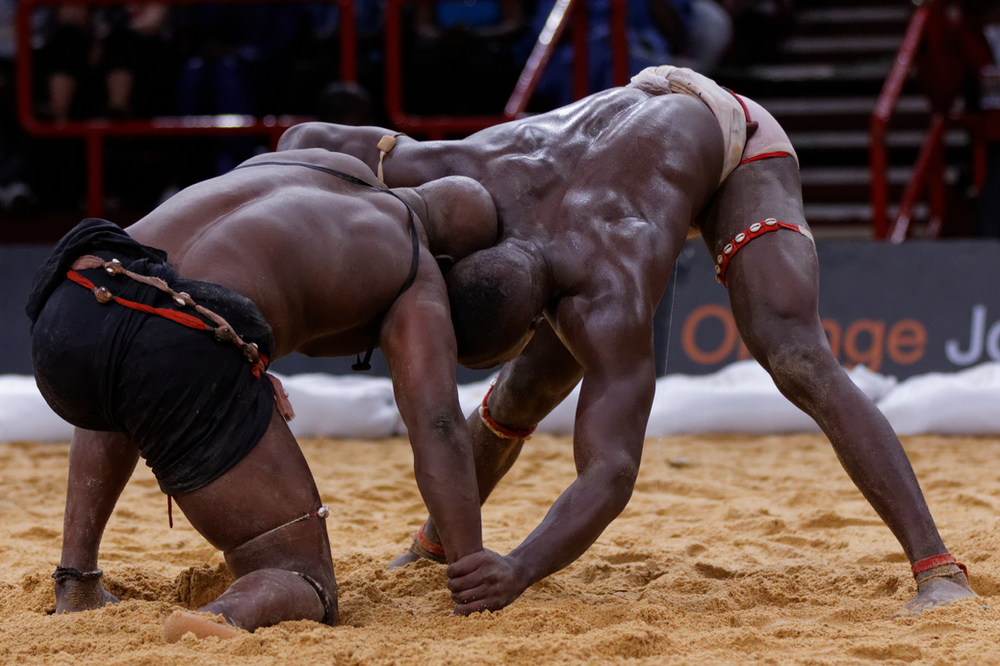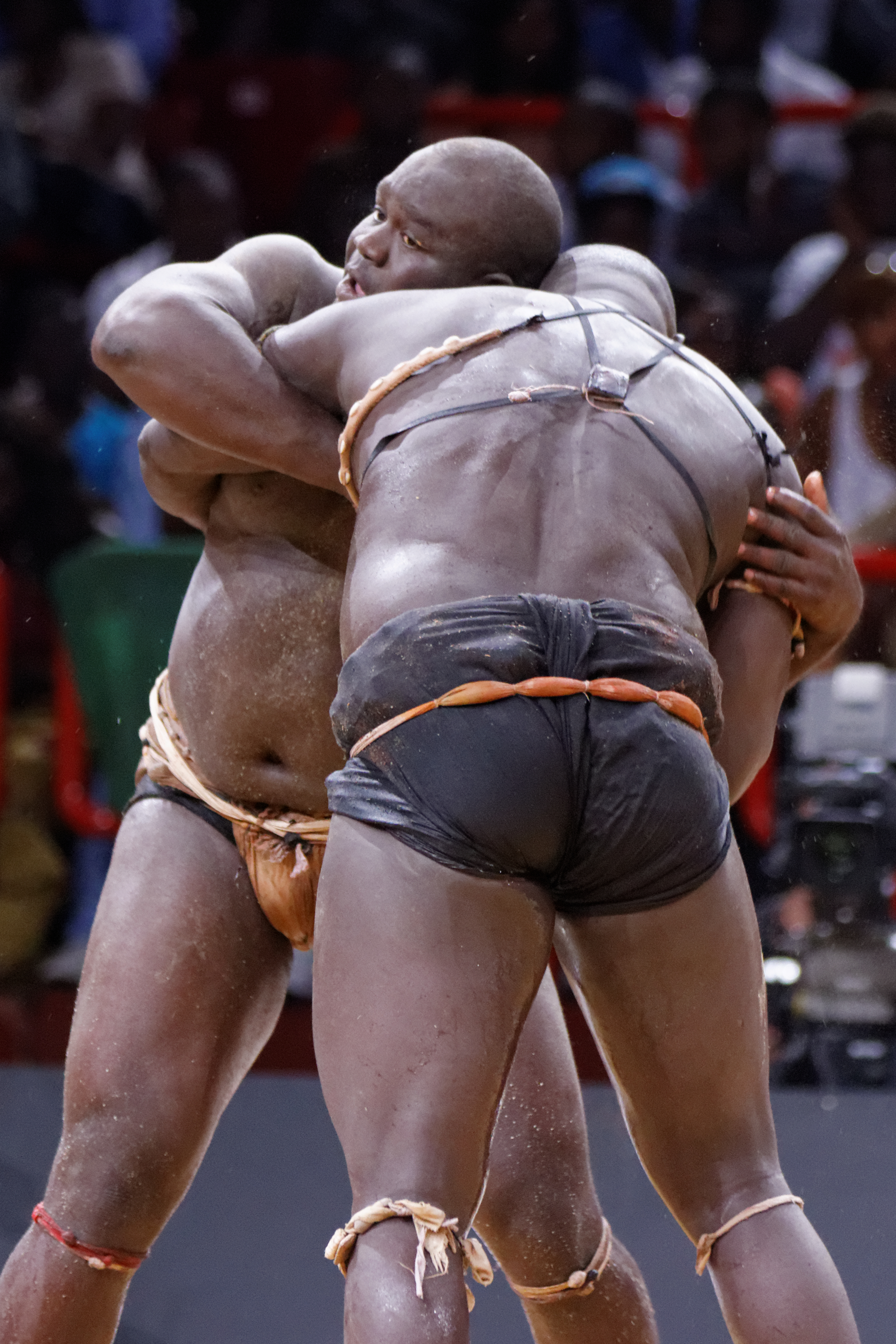Sand flies in every direction as two burly men try to flip their opponent on to their back. The stakes are high, and the crowd watches in anticipation waiting to see who wins. Laamb in Wolof is Senegalese wrestling. Laamb is more popular than football, and wrestlers can earn $100,000 or more for winning a match. Laamb represents an opportunity to be plucked from obscurity and to be put on a platform that makes them a nationally-known name.

Photo Credit: Pierre-Yves Beaudouin / ,,Wikimedia Commons
The origin of laamb is said to come from the countryside in Senegal where at the end of the harvest season men from the village would wrestle. It was a way to not only blow off some steam, but to also show off their strength and be declared the champion. While laamb has been played in Senegal for a long time, its popularity started to pick up steam in the ’90s with corporate sponsorship, and large arena fights drawing in thousands of spectators. One aspect of the popularity among the youth is because laamb represents an opportunity to make thousands when job opportunities are slim.
The rules of laamb are fairly straightforward. It incorporates Greco-Roman wrestling and the first person who can flip their opponent on their back wins the fight. There are two versions of laamb. In one version wrestlers must refrain from using their hands, this version is often used in local village fights. The matches that are in large stadiums are usually the second version, in which wrestlers are allowed to throw jabs and punches. What makes laamb stand out is the incorporation of spiritual pre-fight rituals. This is evident in the training leading up to the match. Wrestlers take part in rigorous physical training up to 4 months before their fights, but also prepare themselves spiritually as a huge part of the fight is believed to happen in the spiritual realm. This is where the marabouts step in. The marabouts are important in laamb, as they are spiritual guides in the Sufi tradition prevalent among Senegal’s Muslim majority. The reason being, while skill and strength are important to be successful in laamb, no wrestler would fight without spiritual protection. Wrestlers often go to the homes of marabouts before the fights to be given liquids that they have made and blessed to protect them from any negative spirits.


Photo Credit: Pierre-Yves Beaudouin / ,,Wikimedia Commons
On the day of the fights, fans pack the stadiums and the wrestlers enter accompanied by their coaches, team, and marabouts. The marabouts would provide ‘Gris Gris’ for the wrestlers to wear during the fight. Gris Gris are amulets that are often in the form of small cloth bags, which are inscribed with verses from the Qur’an and contain ritual objects. The marabouts also pour liquids that have been prepared and blessed by them over the wrestlers before the fight. The Gris Gris and liquids are to ward off evil or negative tongues and eyes. Wrestlers wear amulets on their arms for protection. The wrestlers would often walk around while there is a procession of beating drums, dances, and the wrestlers or griots would perform ‘bakks’ which is an oral art performance that is supposed to boast about the wrestler and instill a sense of fear in the opponent.
Then the fight begins and the crowds watch as the wrestlers grapple, sand flying everywhere as they try to flip each other over. While the length of the match is determined by the tactics and risks the wrestlers take, most fights last only 2-3 minutes. At the end of the fight, legends are made who go on to reach the level of status of Micheal Jordan in Senegal, with endorsements, and high payouts. However, while the dream of becoming a famous Laamb wrestler is still very much alive, the reality according to the New York Times is that “the percentage of wrestlers who become rich in the sport is minuscule. Of more than 3,000 registered wrestlers, only a dozen earn more than $100,000 per combat, and those wrestlers have only one match per year…a vast majority will earn less than $2,000 in the ring, and many will earn nothing”.
Laamb is a game that excites the crowd, in part because of the rituals but also due to the spectacular showmanship of the wrestlers. It started as a game that was kept alive in tradition in the local fights, bringing together communities and spectators, but has now grown to stadium packed games. The traditional elements of laamb are still kept alive, and it is unlikely that it will lose its hold as the most loved game in Senegal.
Powered by WPeMatico


